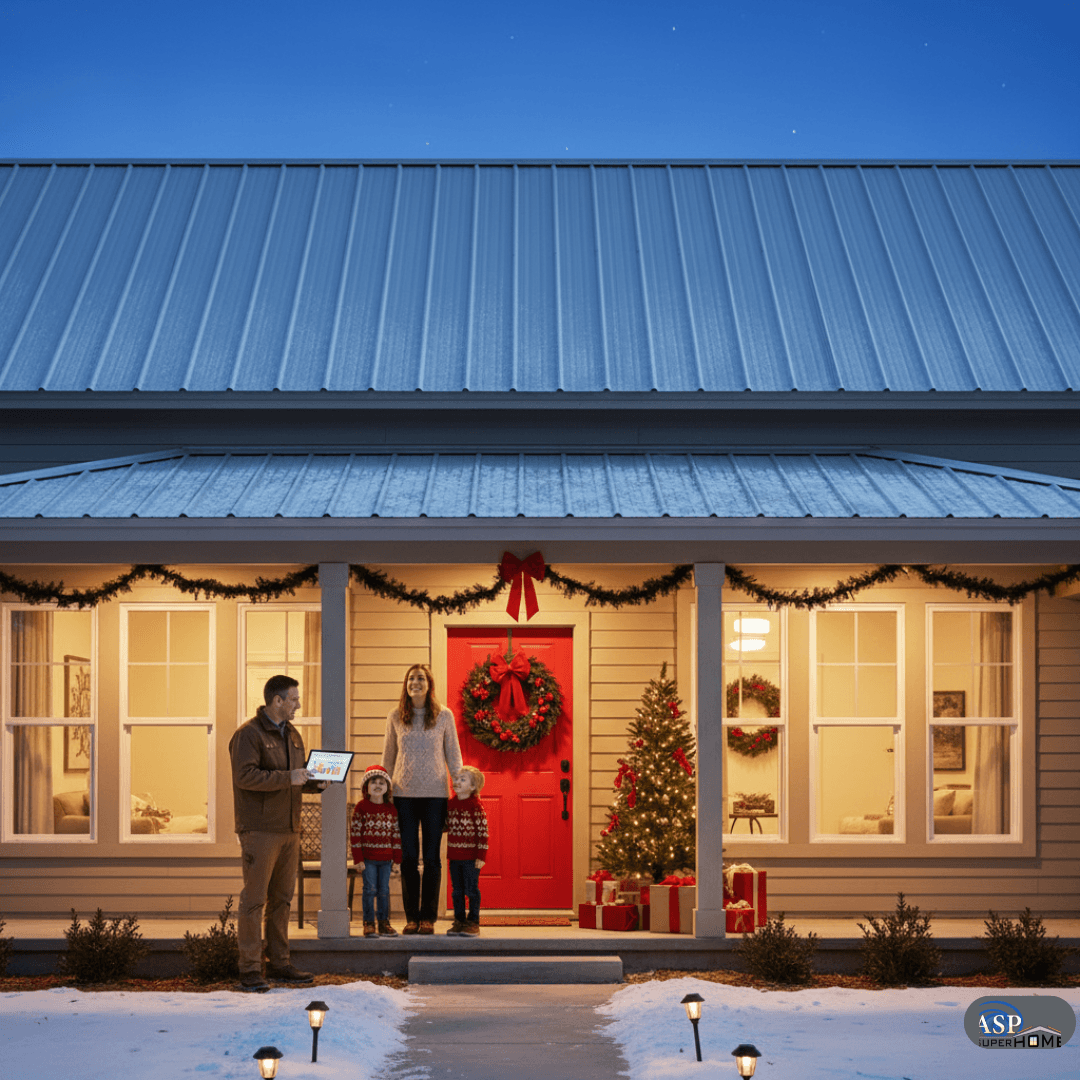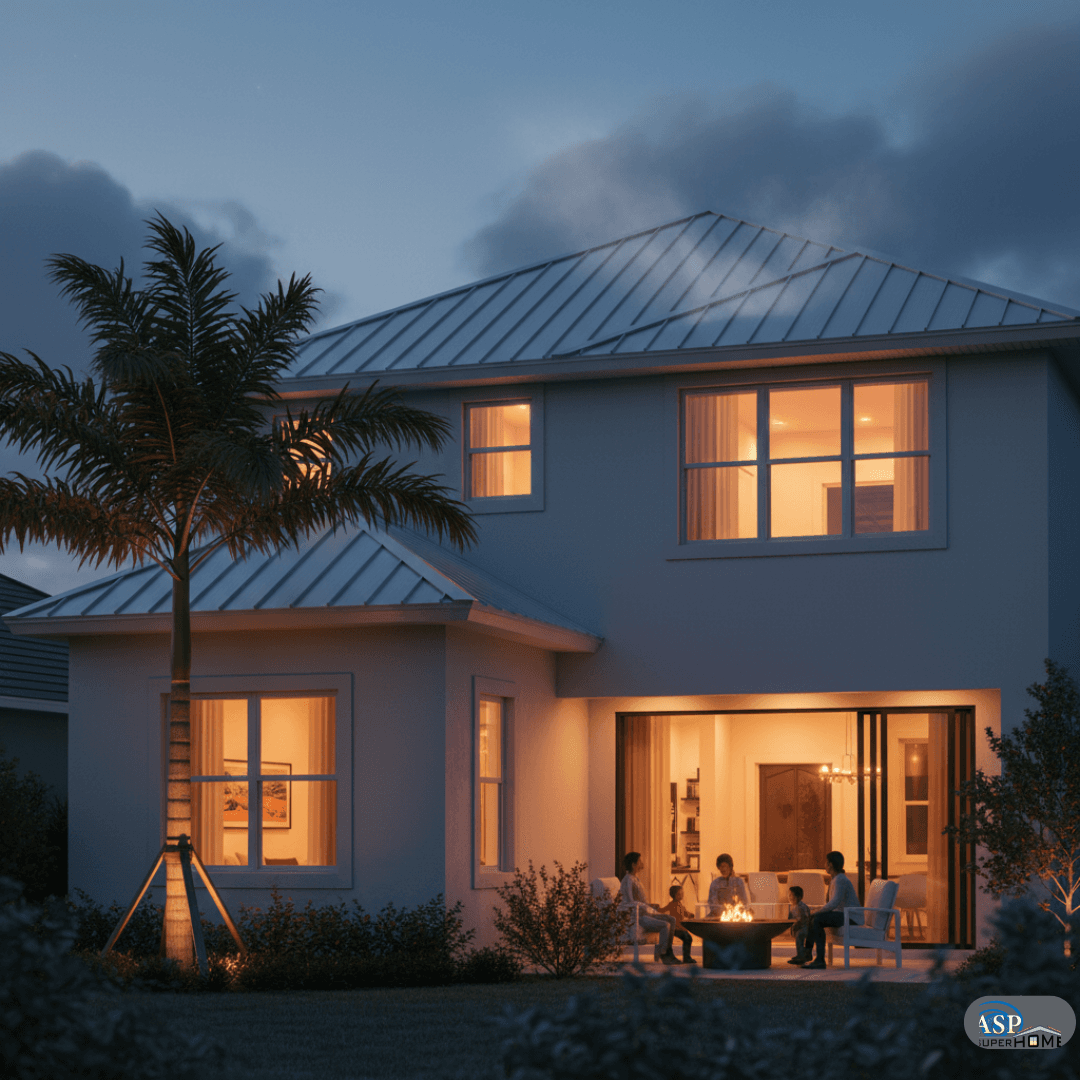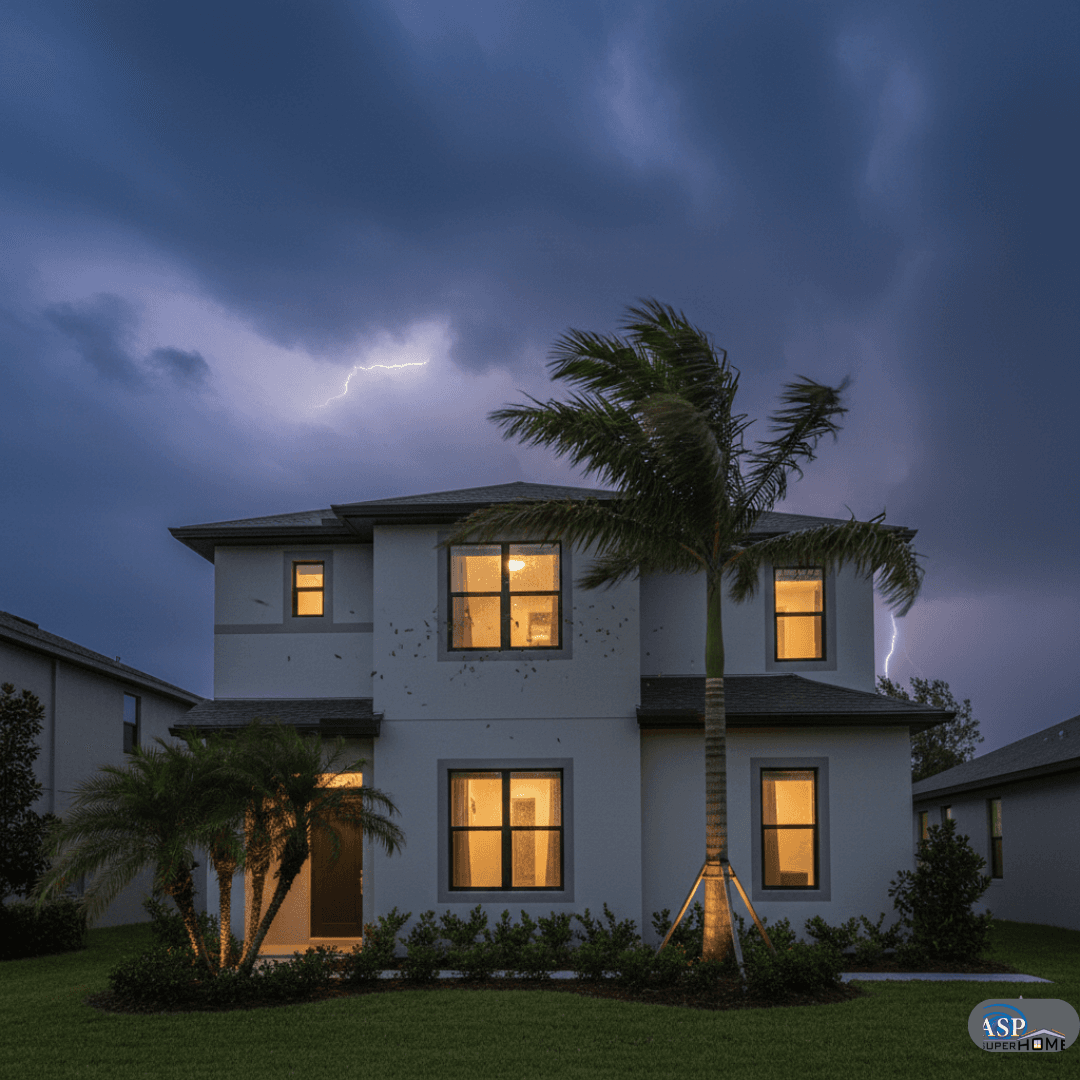Miami Roofing 101: What is a Metal Roof?
(And The Best Materials for Florida Climate)
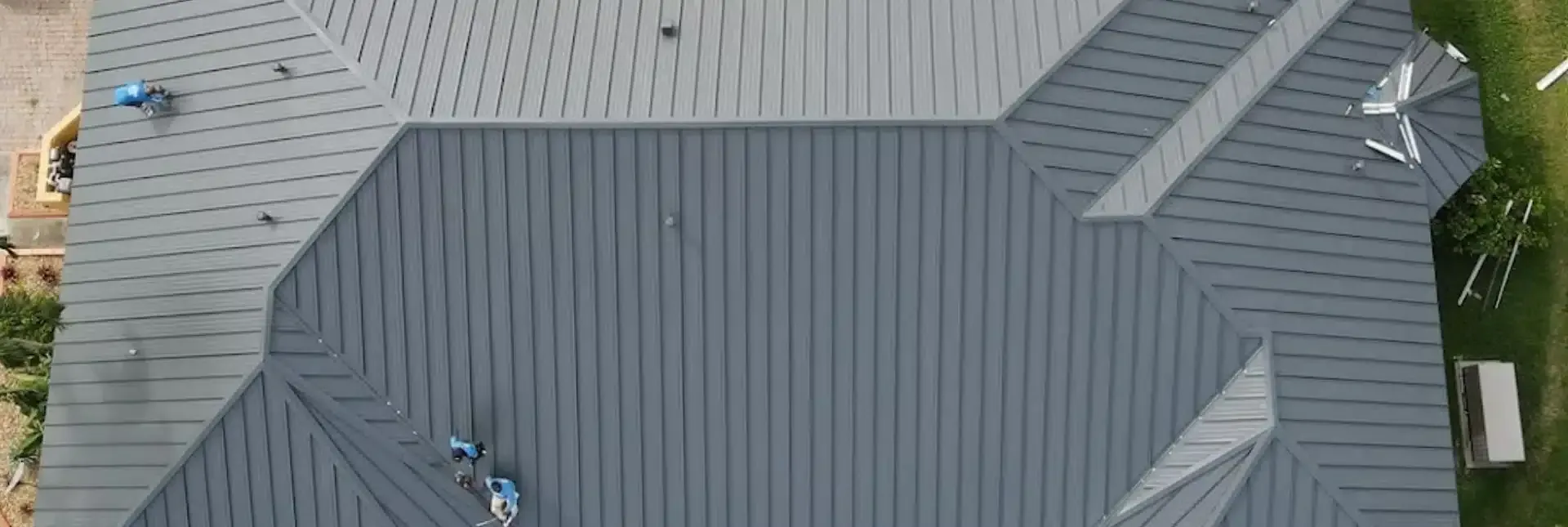
Hurricanes, intense sunlight, hot temperature — Miami’s harsh climate requires roofing material that can withstand the extremes. Metal Roofing products are made from a variety of materials such as aluminum, zinc, tin, and copper.
However, with so many roofing choices available, you might wonder:
What is a metal roof and is metal roofing ideal for the Florida climate?
No question. Metal roofing is the second most popular in the United States (U.S.). People praise it for its impressive list of benefits, and it has one of the best for longevity, sustainability, durability, energy efficiency, and ROI. But is metal roofing the best option for Miami homeowners?
To find out, let’s start with the basics.
What Are Metal Roofs?
A metal roof is a roofing system constructed using metal materials such as aluminum, steel, or copper to withstand corrosion, resistance, and impermeability to water. The roofing material has received praise for being:
- Strong
- Able to survive hurricanes, hail, and wildfires
- Durable with a lifespan of over 50 years
- Energy saver — it reflects most of the sun’s heat
- Requires virtually no upkeep when properly installed
The History of Metal Roofing
The earliest form of the metal roof was used by the ancient Egyptians and Babylonians as early as 2000 B.C. However, it didn’t gain popularity in the U.S. until the 19th century.
In the U.S., metal roofing dates back to the 18th century. During that period, the only common metals were lead and copper. According to National Park Service, Copper with standing seams covered some of the notable early American roofs, including that of Christ Church (1727) in Philadelphia.
By the mid-1800s, metal roofing popularity was skyrocketing as mass-produced steel covered ordinary homes and barns. In the 1850s, processed iron was used in post offices, train sheds, factories, and some homes.
In 1857, Philadelphia Mint installed one of the first metal roofs in the South. The Mint was then fireproofed with a 20-gauged galvanized, corrugated iron roof on iron trusses.
The 1900s Metal Roofing Revolution
Came the 1900s, the metal roofing revolution shited to performance. France started galvanizing iron with zinc to protect the iron sheets from rusting.
In the 1920s, lightweight, no-rust aluminum entered the market. At the same time, the paint coating also began to add color and longevity to aluminum and steel roofs.
Today, a majority of the U.S. population is embracing metal roofing. In the last 20 years, its popularity nearly quadrupled.
Get A Metal Roof Quote Now!
Interested in:
RoofingWindowsSolarGutters
SMS Opt-in By checking this box, you agree to receive text messages from APS SuperHome. You may reply to STOP to opt-out at any time. Reply HELP for assistance. Messages and data rates may apply. Message frequency will vary. Learn more on our Privarcy Policy Page.
Types of Metal Roofs, Their Lifespan, and Cost Factors
The material is one of your biggest choices when installing a new metal roof. There are many metal materials suitable for the Miami climate. Here are options that will stand better against corrosion, damage from impact, and heat reflection. The price breakdown is per square foot, according to Forbe Homes 2023.
Free Quote
Aluminum
Aluminum is the most common and lightweight roofing metal on the market. While aluminum is light, homeowners rave about its durability. You get the highest strength-to-weight ratio than any other type of metal roofing. In other words, you get the same amount of strength or more without using a heavy material that’s harder to work with during installation.
What makes aluminum excellent for Miami homeowners is that it reflects sunlight, potentially lowering your heating bills.
Advantages of Aluminum Roof
- Aluminum requires little-to-no maintenance
- The material is corrosion-resistant
- Lightweight, requiring less stress during installation
- Highly malleable, and you can easily configure it into different profiles allowing different designs
- The material is energy-efficient, recyclable, and long-lasting
Disadvantages of Aluminum Roof
- More prone to denting than materials like steel — you might need to use heavier thicknesses to increase resistance to dents, durability, and strength.
- High initial cost, especially when you choose a thicker gauge
Lifespan: 45 – 50 years
Tin
Tin roofs are common in older houses. However, when used in a modern house, it’s usually a combination of steel saturated with a tin coating to enhance durability and withstand cracking. The material was first used for roofing in the 1700s and gained popularity because of its lightweight.
However, Tin’s popularity started declining when the world started embracing aluminum. Tin is becoming obsolete, and you’ll rarely sport a tin roof today. Plus, tin roofing is prone to rust and corrosion.
The Florida climate makes Tin even less desirable, and if you install it, you should consider the roof repair cost.
Advantages of Tin Roof
- Tin is lightweight and often used instead of aluminum
- Easy to install
Disadvantages
- Obsolete and almost unavailable
- Requires regular maintenance to prevent rust and corrosion
Lifespan: Over 70 years
Zinc
Zinc roofing is nearly similar to copper. The metal is exceptional and changes appearance over time.
The best thing about Zinc is its self-healing properties that allow it to fix nicks and scratches without maintenance and create a protective coating as it weathers. However, expect to pay a premium for Zinc’s beauty.
While Zinc roofs are most common in Europe, they are not popular in the U.S. due to high cost.
Advantages of Zinc Roofing
- Zinc has a striking blue/grey appeal
- The material is naturally resistant to corrosion
- Long lifespan of 80 -100 years
- Requires little to no maintenance after installation
Disadvantages
- Expensive and inappropriate when you’re on a tight budget
- A zinc roof will chalk when it develops a blue/gray color which might be unattractive
- Has limited availability
Lifespan: 80 – 100 Years
Steel
When using the term metal roofing, many people usually refer to steel roofs. Steel is an alloy of iron and other metal and will give you three metal roof options:
- Galvalume
- Galvanized
- Stainless
Of the three, stainless steel is the most expensive but highly durable and rust-resistant. Galvalume and galvanized are less pricey and require less maintenance. The unmatched capability of stainless steel can stay strong for up to 100 years against harsh Florida storms, rust, or corrosion.
Steel roofing has been common in commercial buildings for years, but now it’s gaining popularity for residential use because of its affordability. The wide price range covers everything from simple corrugated steel sheets to galvanized and stainless steel.
The high-end steel roofing specializes in coatings that change appearance.
Advantages of Steel Roof
- Low maintenance: all you need is to remove leaves, branches, and debris from the roof.
- Resistance to fire and rotting: No problems with mildew, termite, or rodent infestation
- Longevity and cost efficacy, the cheapest steel roof is the least expensive of the five roofing materials. It costs 35% less than aluminum and nearly ⅓ the price of zinc and copper.
- Durability: The strength of a steel roof can resist cracking, warping, or chipping. The roof can withstand a brute wind force of up to 140 mph and the impact of falling objects.
Disadvantages
- Steel has less corrosion resistance
- Bulky and can create more stress on your house structure
- The lower-end steel roof has a relatively lower lifespan of 40 – 60 years
Lifespan: 40 – 100 years, depending on the type of steel you’re choosing
Copper
The world glorifies copper roofing for its striking and unique appearance. The roof can come in different styles, including copper tiles, shingles, panels, or sheets.
What makes it even more appealing is that it will change color over time, turning from a new penny like copper to a brown or a blue-green patina. The patina will differ depending on your location in Miami.
Copper is the most expensive metal roofing. However, the roof has a long life span of over 100 years and is relatively easy to maintain.
Advantages of Copper Roofing
- A striking appeal making it many people’s favorite
- Extra long-lasting than any other metal material
- The material is corrosion resistant
- Easy to install
- Lightweight
- It gives your home a traditional look
Disadvantages
- One of the most expensive metal roofing solutions and won’t be excellent when you’re on a strict budget.
- Prone to denting from hail or falling debris, lowering its aesthetic appeal
Lifespan: Over 100 years
Here’s a table that compares metal roofing, their lifespans, and is it ideal for the Florida climate.
Roof Type
Aluminum
Tin
Zinc
Steel
Copper
Life Span
45 – 50 years
70 or more years
80 – 100 years
40 – 60 years; stainless steel might last up to 100 years
Over 100 years
Ideal For Florida Climate
Recommended – saves energy, corrosion-resistant, hurricane resistant.
No – rusts to easily won’t stand up to strong storms or hurricanes.
No – extremely expensive.
Yes – hurricane, fire, corrosion and mildew resistant, plus energy savings.
Can be used but very expensive.
Read this to learn how much you can expect to pay for a metal roof in Miami.
CONTACT US NOW: (786) 625-7192
The Leading Professionals In Roof Installation In South Florida. Let Us Prove It To You!

What Are The Advantages of Metal Roofing Over Other Roofing Materials
Several reasons make metal roofing more appropriate than tiles, asphalt shingles, or concrete. These include:
Longevity
Metal roofing systems can withstand decades of Miami’s harsh weather more than any other traditional roofing materials, especially asphalt shingle roofing.
Depending on the metal type, most roofs will last 50+ years without any extreme signs of degradation or corrosion. If you compare it with concrete, wood, plastic, or glass, metal is the strongest and most durable.
When properly installed, metal roofing material will withstand the following:
- Strong winds
- Snow
- Rain and moisture
- UV exposure
- Mold, algae, mildew
- Rodents and other animals
More importantly, metal roof materials are often Class A fire-rated and noncombustible — meaning the highest fire resistance grade possible.
Little-to-no Maintenance Requirement
The level of upkeep you need to maintain a metal roof is generally minimal, especially if the roof was correctly installed. General maintenance usually includes:
- Looking for leaves, debris, and branches that could get stuck on the roof and the gutters
- Cleaning for stubborn stains that come with rain
You don’t need to worry about maintenance with metal roofing.
Eco-Friendliness
Metal roof is environmentally friendly in several ways, including:
- Recyclability: Any old panel, tear-off metal, and manufactured excess scraps are reusable in future products. Recyclability reduces the demand for new raw materials and minimizes waste sent to landfills.
- Energy efficiency: Metal roofs reflect significant solar heat, reducing the heat transfer to your home. As a result, you’ll demand less energy for air conditioning during hot Miami summers.
- Longevity: Metal roofs boast an impressive lifespan, often between 40 to 70 years. You won’t need frequent replacements that would otherwise have an environmental impact.
Better Return on Investment
No question. The upfront cost of metal roofs is more expensive than tiles or asphalt shingles. However, metals can last decades — up to 60 years — while asphalt shingles last anywhere from 15 to 20 years.
While a metal roof will generally last decades, some factors will affect its lifespan, such as:
- Quality of the installation
- Maintenance practices
- Type of metal you choose
What Are the Disadvantages of Metal Roofing Over Other Roofing Materials
Like any other product worth considering, metal roofing has potential disadvantages. Some of the most notable ones include:
High initial cost
While metal roofs are becoming more popular among homeowners, many are concerned about the high initial cost compared to less expensive materials such as asphalt shingles. Forbes reports that metal roofing costs in 2023 range from $8,500 to $68,000 depending on your:
- Roof size
- Metal type
- Roof style
- Location
The price can be twice as expensive as other roofing materials.
While the initial cost may be higher, its durability, longevity, and energy saving can result in significant savings over time.
Denting and Scratching
A metal roof, especially one made from softer materials like aluminum and copper, is prone to denting and scratching. While these don’t affect performance, they might compromise your roof’s aesthetics.
However, a metal like steel guarantees no dent. You can mitigate the risk of denting and scratching by opting for stronger metal options, installing protective coating, or choosing textured finishes to camouflage imperfections.
Noise concerns
Metal roofs can be noisier than other materials during heavy rains, hailstorms, or other weather events. Since metal roofs last an average minimum of 50 years, many homeowners are concerned about investing in a roof that would bother them and their families for decades to come.
However, proper roof construction, insulation, underlayment, and attic space can reduce sound transmission to your home.
CONTACT US NOW: (786) 625-7192
The Leading Professionals In Roof Installation In South Florida. Let Us Prove It To You!

What’s the Value Proposition of a Metal Roof?
Metal roofs offer a compelling value proposition for Miami homeowners versus asphalt shingle or cement tile. If you examine the upfront costs against the long-term benefits, you’ll see that a metal roof is worth the investment. Depending on your circumstances, a metal roof can:
- Increase the value of your home. Prospective buyers appreciate the durability and low maintenance requirement of a metal roof.
- Reduce home-cooling expenditure during the hot Miami summers. A metal roof can reflect most of the sun’s heat from your home, reducing the need for cooling.
- Eliminate the need for frequent replacements. All metal roofs last longer and require nearly no maintenance. You can, therefore, save on repair and maintenance money in the long term.
The Environmental Impact of Metal Roofs
Metal roofing is an unlikely way to reduce waste and save energy. As stated earlier, metal roofs have several environmental benefits, making them an eco-friendly choice. For instance:
- 90% of metal roofs are often made from recycled materials
- Metal roofs are fully recyclable at the end of their lifespan
- Metal roofs are energy-efficient, reflecting solar heat, reducing the demand for air conditioning
As the public moves toward a more sustainable lifestyle, installing a metal roof can help you promote the initiative.
Is Metal Roofing Worth It for Miami Homeowners?
Whether a metal roof is worth it will take a little math. You’ll need to estimate the costs of the following:
- Material
- Labor
- Design-specific cost
Then you can consider the following cost-saving opportunities:
- Location and federal tax incentives for adopting energy-saving metal roofing materials
- Increased home value by using a long-lasting and durable roof
- Utility saving for cooling and heating bills
- The potential to lower homeowner insurance by adding a weather-resistant roof
- Savings on pest issues, roof leaks, and other long-term damage
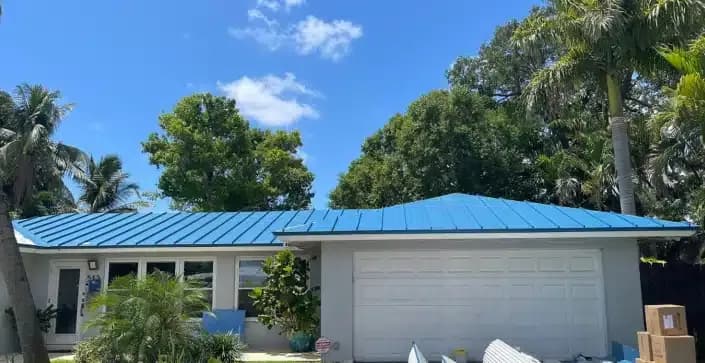
The 7 Things That Matter When Looking For A Metal Roof in Miami, Florida
We’ve covered a lot of technical details. Here’s a quick checklist to help you choose the best metal roof for Miami.
- A metal roof is an excellent match for Miami’s harsh weather. Its strength can withstand the intense sun’s heat, wild winds, salt spurts from the sea, and extreme heat.
- While Tin material compares well to aluminum, avoid it because it can’t resist the harsh Florida climate. It’ll corrode quickly, costing you huge maintenance fees.
- When evaluating the best metal for your roof, consider your budget and suitability for Miami’s climatic conditions.
- Copper and zinc offer the best combination of extreme durability, aesthetic appeal, and little-to-no maintenance requirement. However, they’re the most expensive option, and you won’t easily find a Zinc roof.
- Aluminum is the most common option, praised for its lightweight nature, malleability, and affordability. However, it’s prone to dent and scratching, which can compromise its aesthetics.
- Nearly all metal roofs are recyclable. Installing any option contribute to a more sustainable lifestyle.
- While the initial installation cost of metal roofs is high, you can save a lot of money in the long run because of its longevity, energy efficiency, tax break, and even reduction in homeowner insurance premiums.
- Top Styles include standing seam metal roofing panels and metal tile panels. Learn more about standing seam roofing (a series of interlocking panels) and the metal tile, a product designed to look more like a traditional cement tile or asphalt shingle roofs.
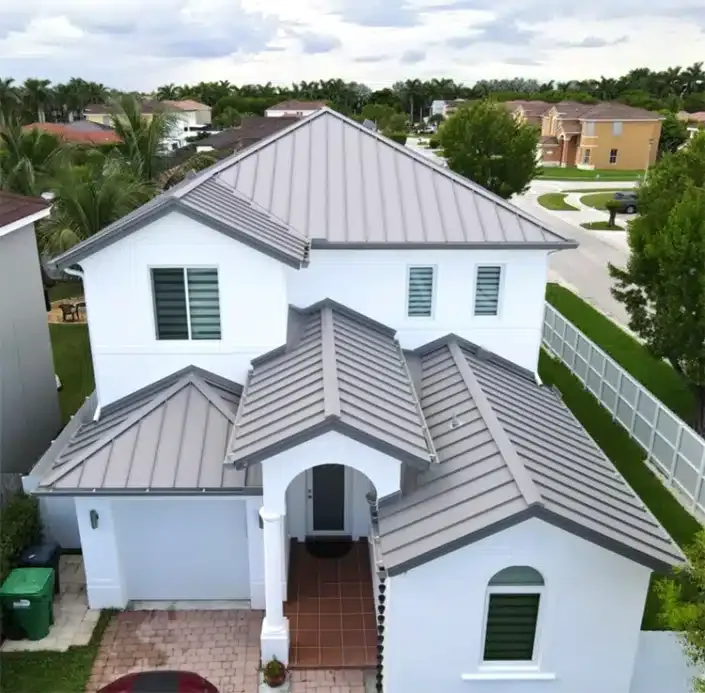
Wrapping Up
Metal roofing is a brilliant option for Miami homes due to its impressive durability, long lifespan, and remarkable energy efficiency. With a wide variety of metal roofing types to choose from, each with its unique benefits, such as aluminum’s high reflectivity or copper’s distinctive appearance, homeowners in Miami are spoilt for choice.
While the initial cost may be slightly higher than asphalt roofing and traditional Miami cement tile, the long-term advantages and resistance to harsh weather make it a wise and sound investment to install metal roofing. Opting for a metal roof isn’t just a simple decision, it’s an investment in the overall well-being, safety, and peace of mind of homeowners in Miami.

